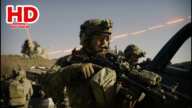![How to Lead Like a Navy SEAL - [Extreme Ownership Book Summary]](http://hrk2022.s322.xrea.com/wp-content/uploads/2025/02/yt-740550-How-to-Lead-Like-a-Navy-SEAL-Extreme-Ownership-Book-Summary.jpg)
Download the Mind Map image: https://www.patreon.com/MindMapsOfficial
Content Directory: https://docs.google.com/spreadsheets/d/1DfzbLTSX4ObY7PjzVDz98eSklrHq1hbGYCQwNeurhG0/edit?usp=sharing
Buy the book! - https://amzn.to/3WJHq2g
Please don't forget to like the video and subscribe to the channel! This will help others find the video so they can learn all about Extreme Ownership as well!
Chapters:
0:00 - Introduction
0:12 - Extreme Ownership
2:02 - No Bad Teams, Only Bad Leaders
4:12 - Believe
6:26 - Check the Ego
8:25 - Cover and Move
10:24 - Simple
12:29 - Prioritize and Execute
14:48 - Decentralized Command
16:54 - Plan
19:00 - Leading Up and Down the Chain of Command
20:53 - Decisiveness amid Uncertainty
23:07 - Discipline Equals Freedom—The Dichotomy of Leadership
Extreme Ownership: How U.S. Navy SEALs Lead and Win by Jocko Willink and Leif Babin is a leadership guide that distills the principles learned on the battlefield into strategies applicable to business, personal growth, and life. The book is built on the central idea that effective leadership requires total responsibility—leaders must own every success and every failure without making excuses or shifting blame. Through gripping war stories from their time leading SEAL Team operations in Iraq, Willink and Babin demonstrate how the same principles that allow soldiers to execute missions under extreme pressure can be applied to leadership in any field.
The book begins with Extreme Ownership, which emphasizes that leaders are ultimately responsible for everything that happens in their teams. Rather than blaming subordinates, external factors, or bad luck, great leaders take full accountability and find solutions. This mindset fosters trust, discipline, and a culture of improvement. The second principle, No Bad Teams, Only Bad Leaders, reinforces the idea that leadership determines a team’s success. Willink and Babin illustrate this with an example from SEAL training, where a struggling team transformed into the best-performing unit simply by changing its leader. The lesson is clear: great leaders inspire excellence, while weak leadership leads to failure.
Believe is another crucial principle—leaders must fully commit to and understand their mission before they can inspire others to follow. If a leader has doubts, their team will too. The authors describe how they overcame skepticism while working with Iraqi soldiers, proving that commitment to a mission is essential for success. Check the Ego reminds leaders that arrogance and pride often lead to poor decisions. Leaders must be open to feedback, willing to admit mistakes, and focused on the bigger picture rather than personal validation.
The principle of Cover and Move stresses the importance of teamwork. Just as SEAL units must work together and support one another in combat, businesses and organizations must break down silos and collaborate for a common goal. Simple highlights that complex plans often fail under pressure, while simple, clear strategies allow for effective execution. Whether in combat or business, leaders must ensure their teams understand the mission without unnecessary complications.
Prioritize and Execute teaches that in high-pressure situations, leaders must avoid being overwhelmed by problems. Instead, they must assess the most critical issue, address it, and then move to the next priority. The ability to remain calm and execute systematically is key. Decentralized Command reinforces that leaders cannot micromanage everything. Instead, they must empower subordinates to take ownership of their responsibilities while ensuring they understand the overall mission. This allows organizations to be more agile and responsive.
Plan underscores the importance of preparation, ensuring all team members understand their roles and responsibilities. Contingency planning is essential to handling unexpected challenges. Leading Up and Down the Chain of Command highlights that leadership is a two-way street. Leaders must effectively communicate with both their superiors and subordinates, providing necessary information to decision-makers while also ensuring their teams are aligned with the broader mission.
Decisiveness Amid Uncertainty teaches that leaders must make decisions quickly, even with incomplete information. Indecision leads to failure, and waiting for perfect clarity often results in missed opportunities. The final principle, Discipline Equals Freedom—The Dichotomy of Leadership, explains that strict discipline creates efficiency and freedom in execution. A well-trained, disciplined team is able to operate more fluidly and adapt when necessary.
All links are affiliate links
powered by Auto Youtube Summarize













